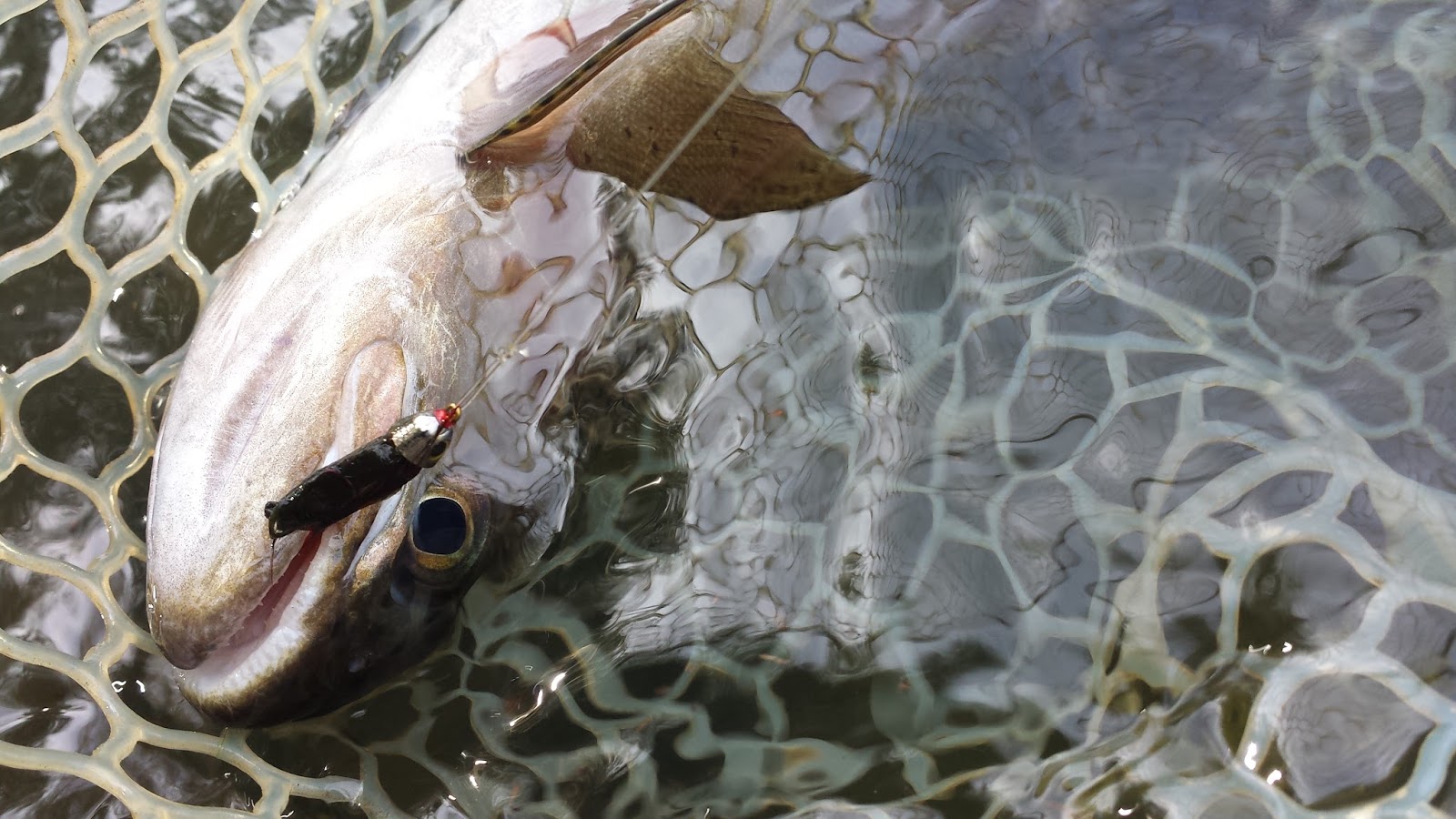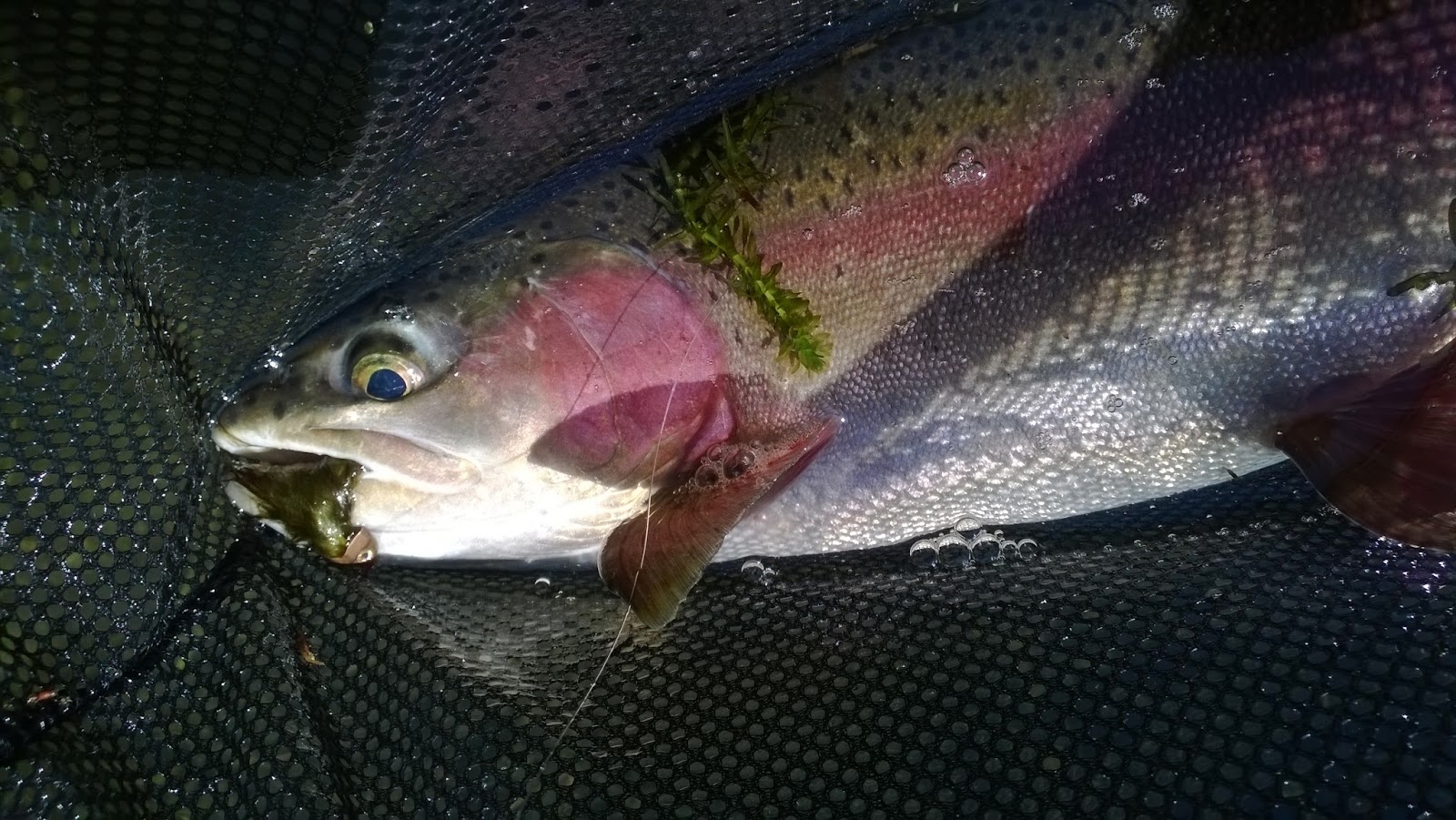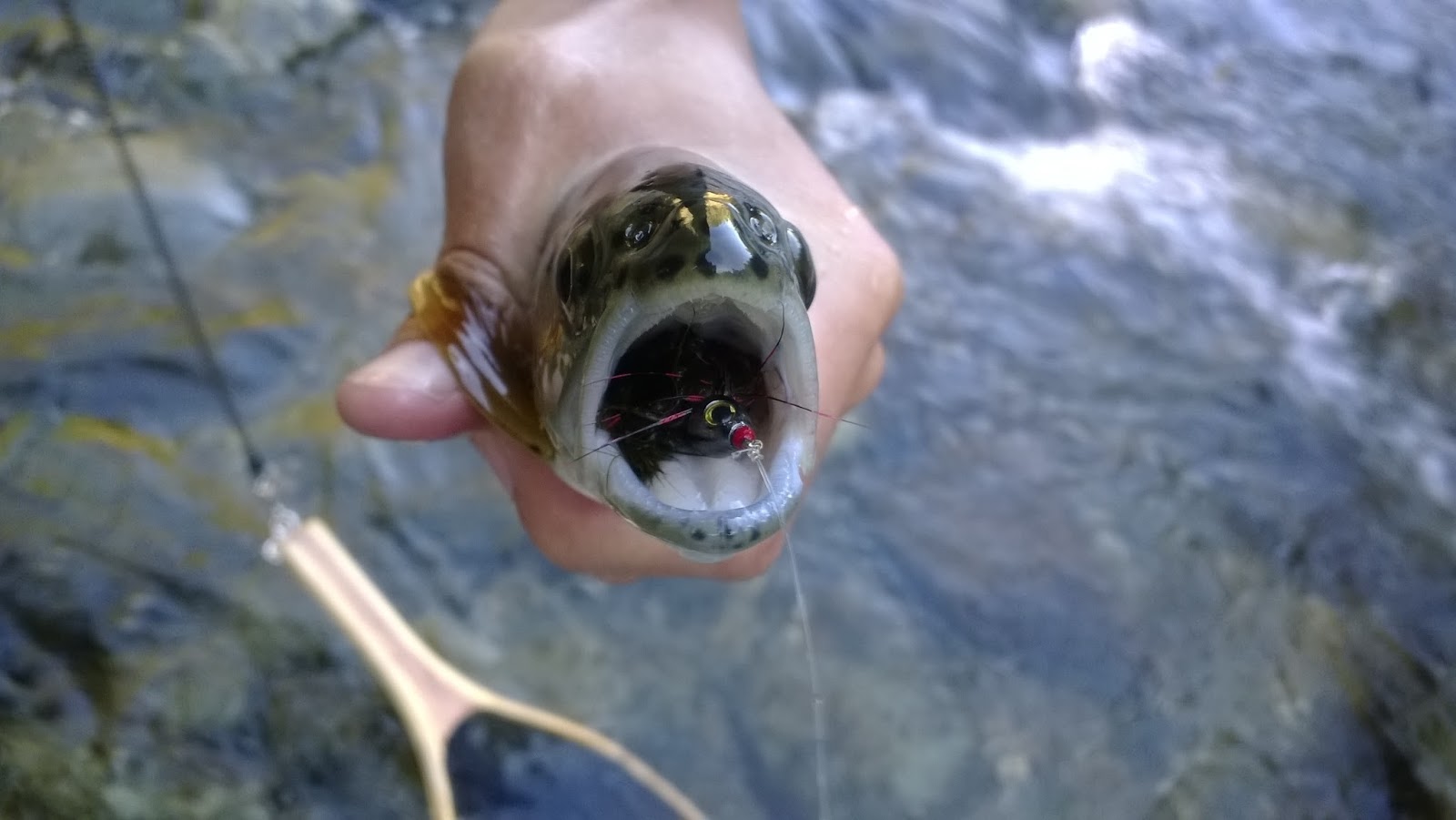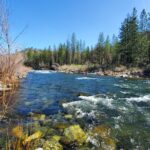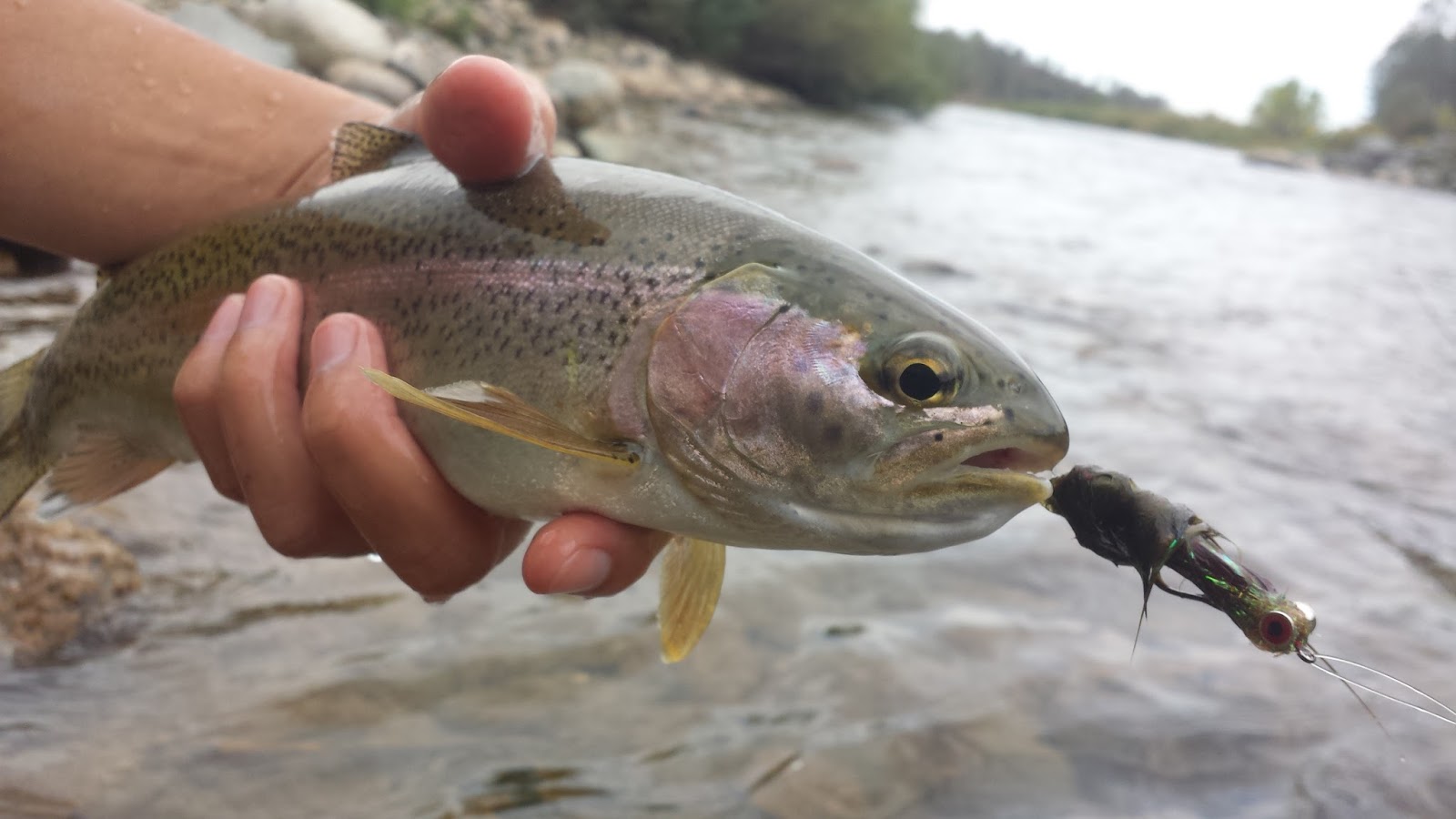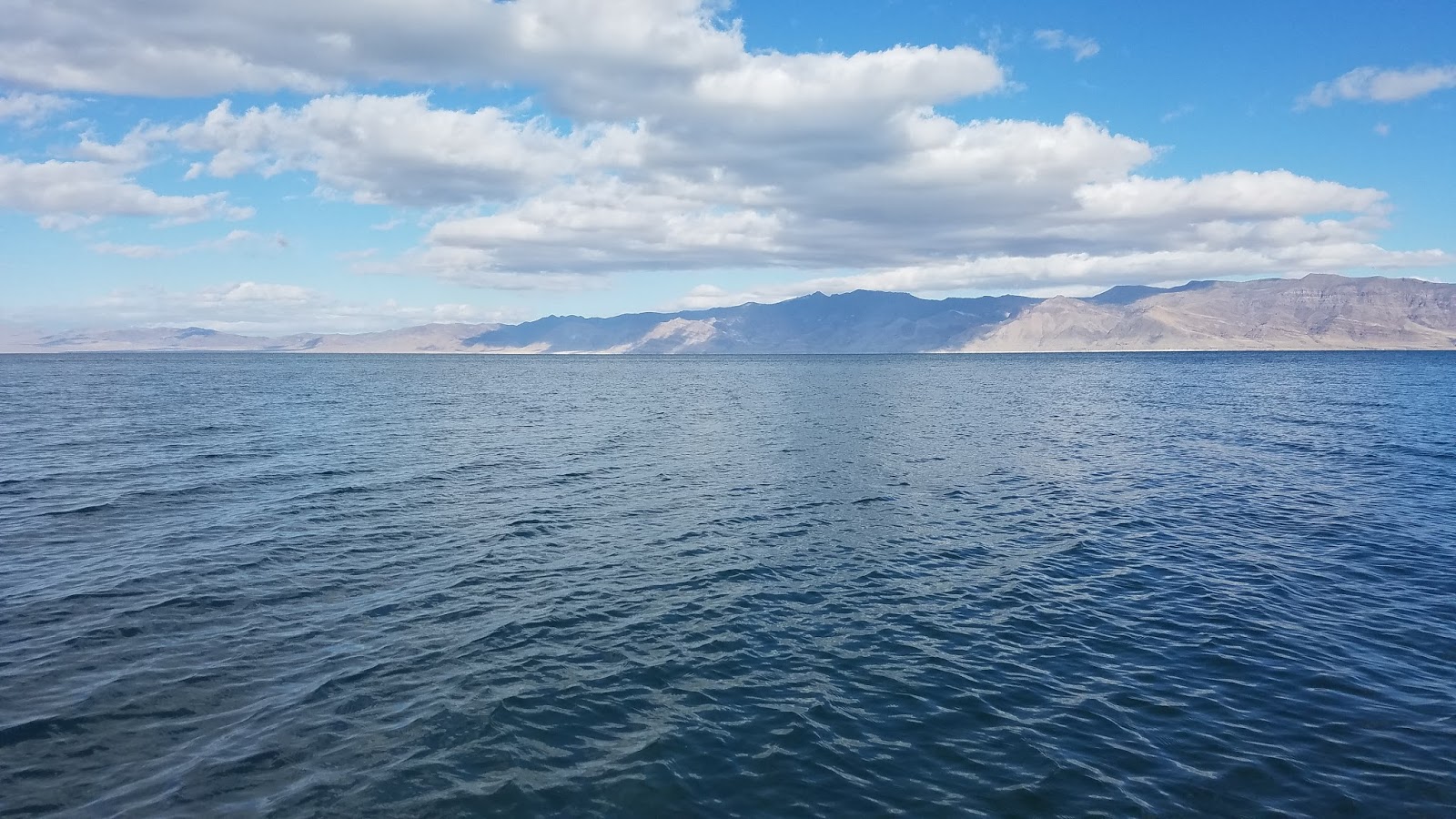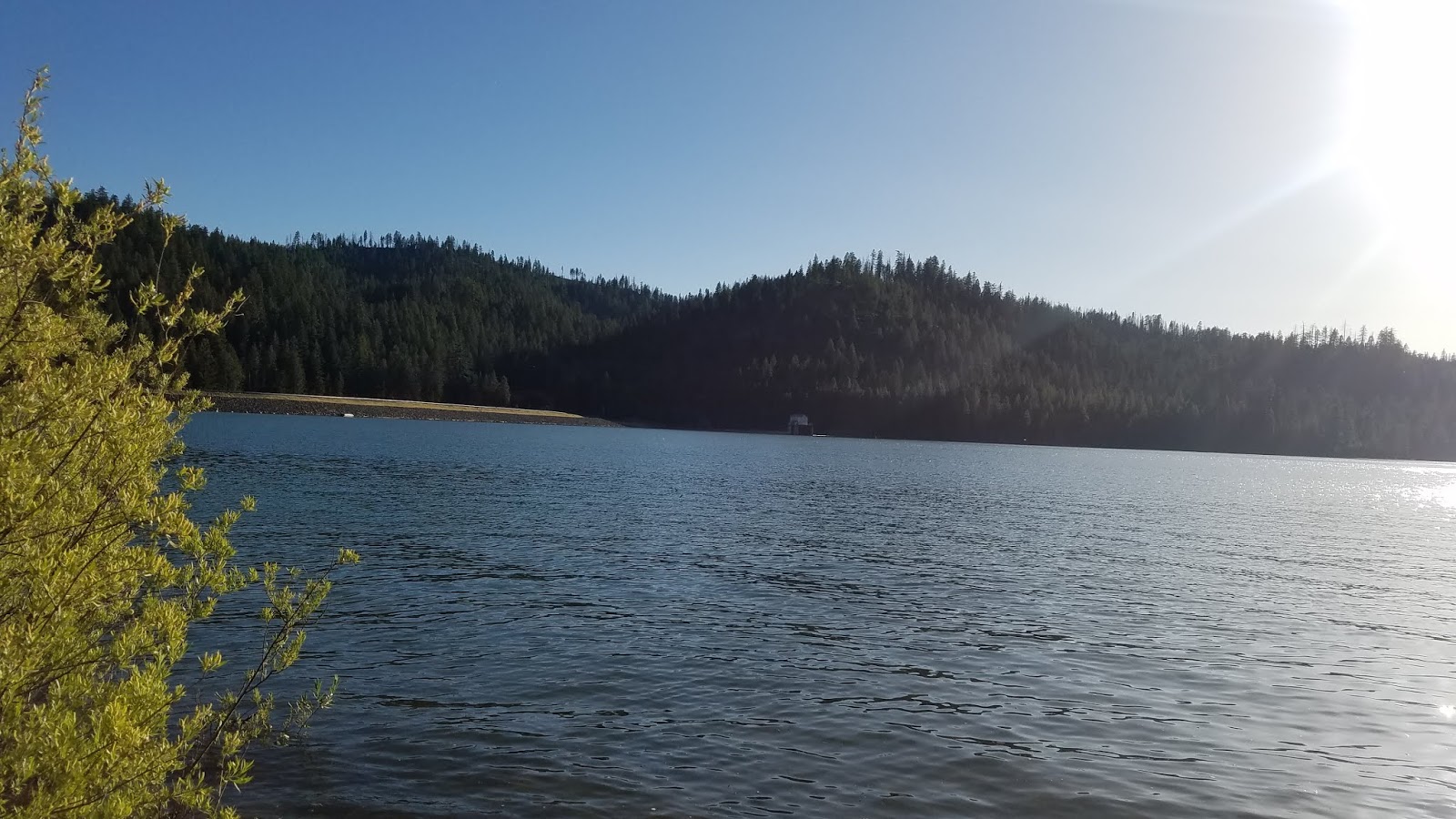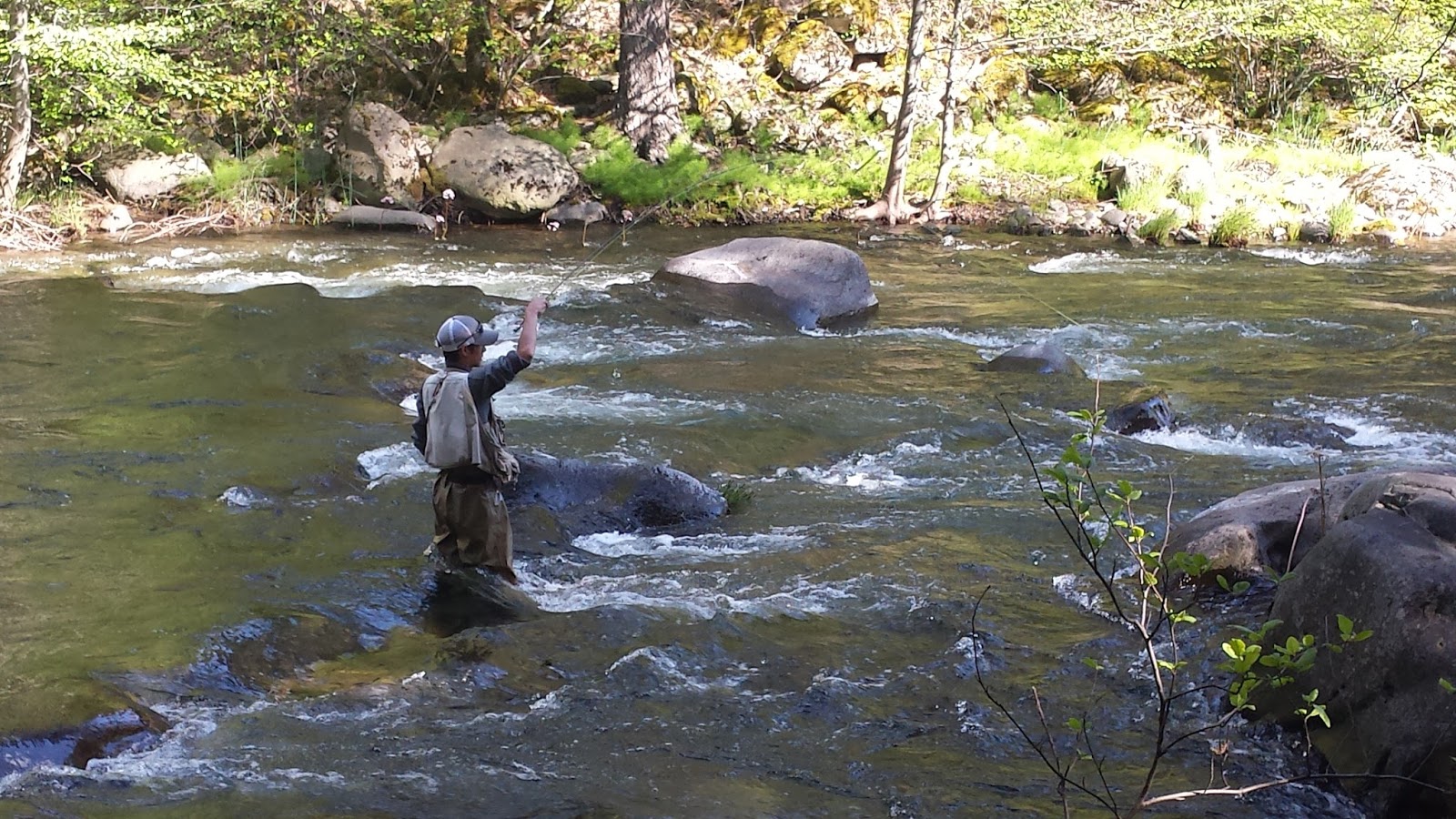 |
| Fish On Deer Creek |
Every year during the trout opener I visit where it all began. Years ago when I first picked up a fly rod, there was a time when I went troutless for four months. Despite catching a lot of warm-water species, I struggled to hook the species that created the outdoor sport of fly fishing. I’ll never forget the first time I hooked my first trout, a beautiful four inch dink on a 6WT rod.
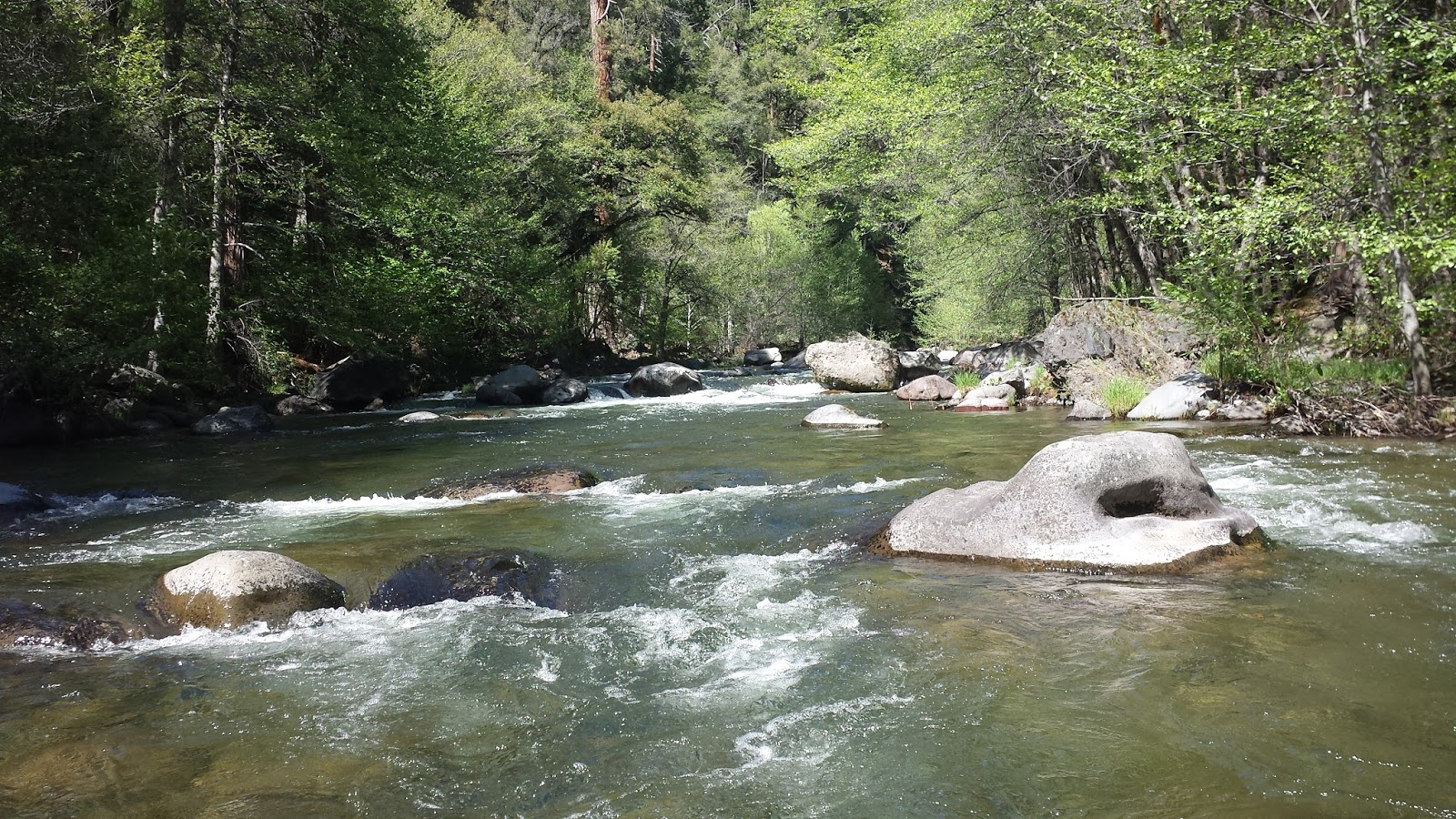 |
| Tehama County Gem |
Deer Creek is a special place. Many anglers that I’ve mention Deer Creek to have told me that this creek is where they first learned how to fly fish. With countless numbers of small rainbows that will literally eat anything you throw at them, this creek is one of the best streams in Northern California where you can learn how to fly fish. It’s not uncommon to leave the creek with over fifty fish caught and released within a day, all on dries!
 |
| Deer Creek Tranquility |
This year the creek is running a little higher than usual. As a matter of fact, the current flows are the highest I’ve seen the creek in over four years! More water means more happy fish.
Nymphing Deer Creek is typically the best tactic until the water warms up in late May. No need for an indicator here, tight-line that shiz because it’s way more fun than watching a bobber all day.
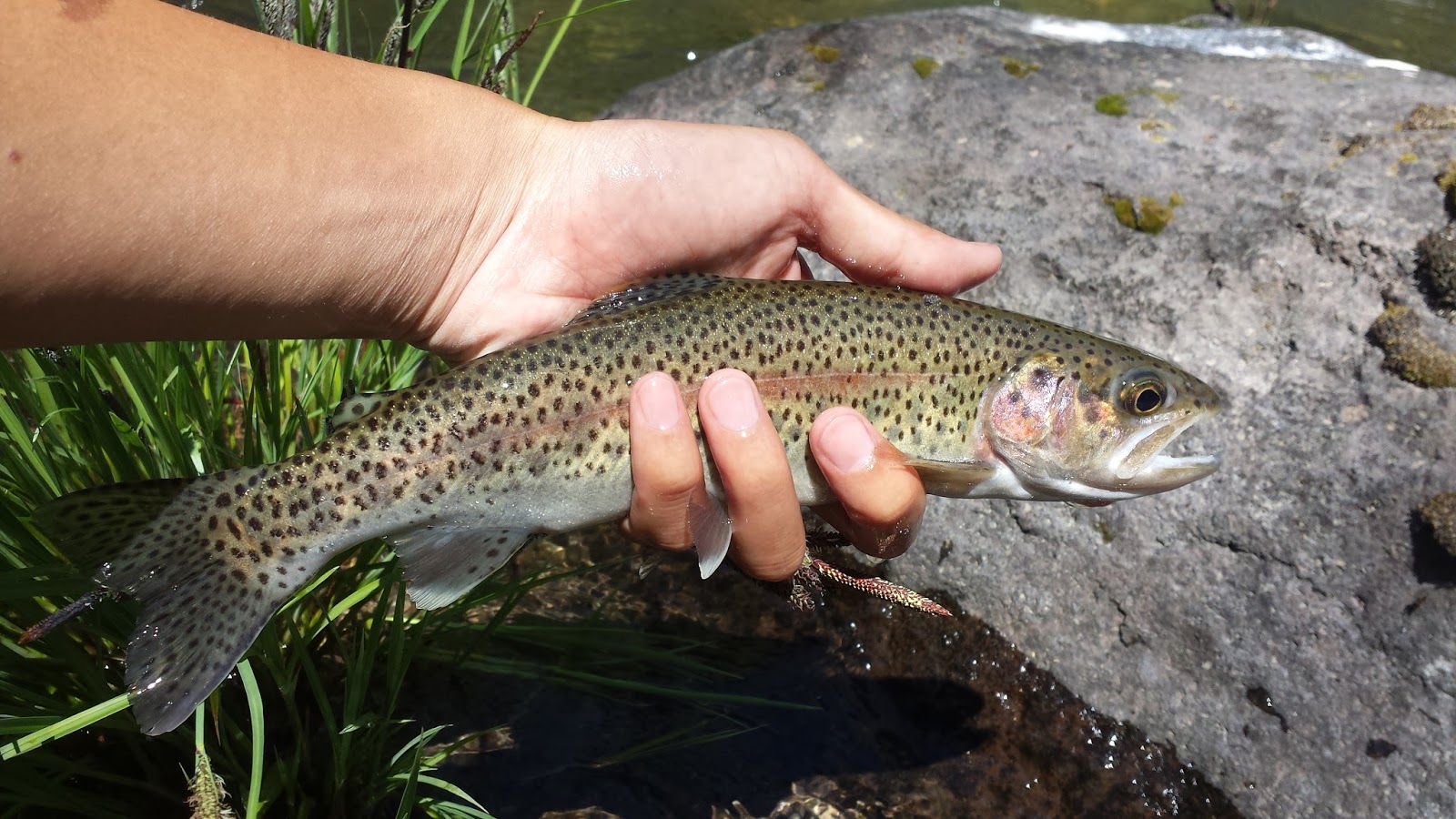 |
| Big Fish for Deer Creek |
My dries were not working this opener. After a fishing a few spots where I knew fish were, I switched to a nymph rig and finally caught them. This was interesting because the water is fairly shallow making it easy to pick off bugs on top, however they weren’t making the effort to rise. The water wasn’t terribly cold but it just goes to show how important it is when trying to figure out what’s working. Bugs were flying around everywhere. I saw march browns, green drakes, caddis, midges, and even a salmon fly.
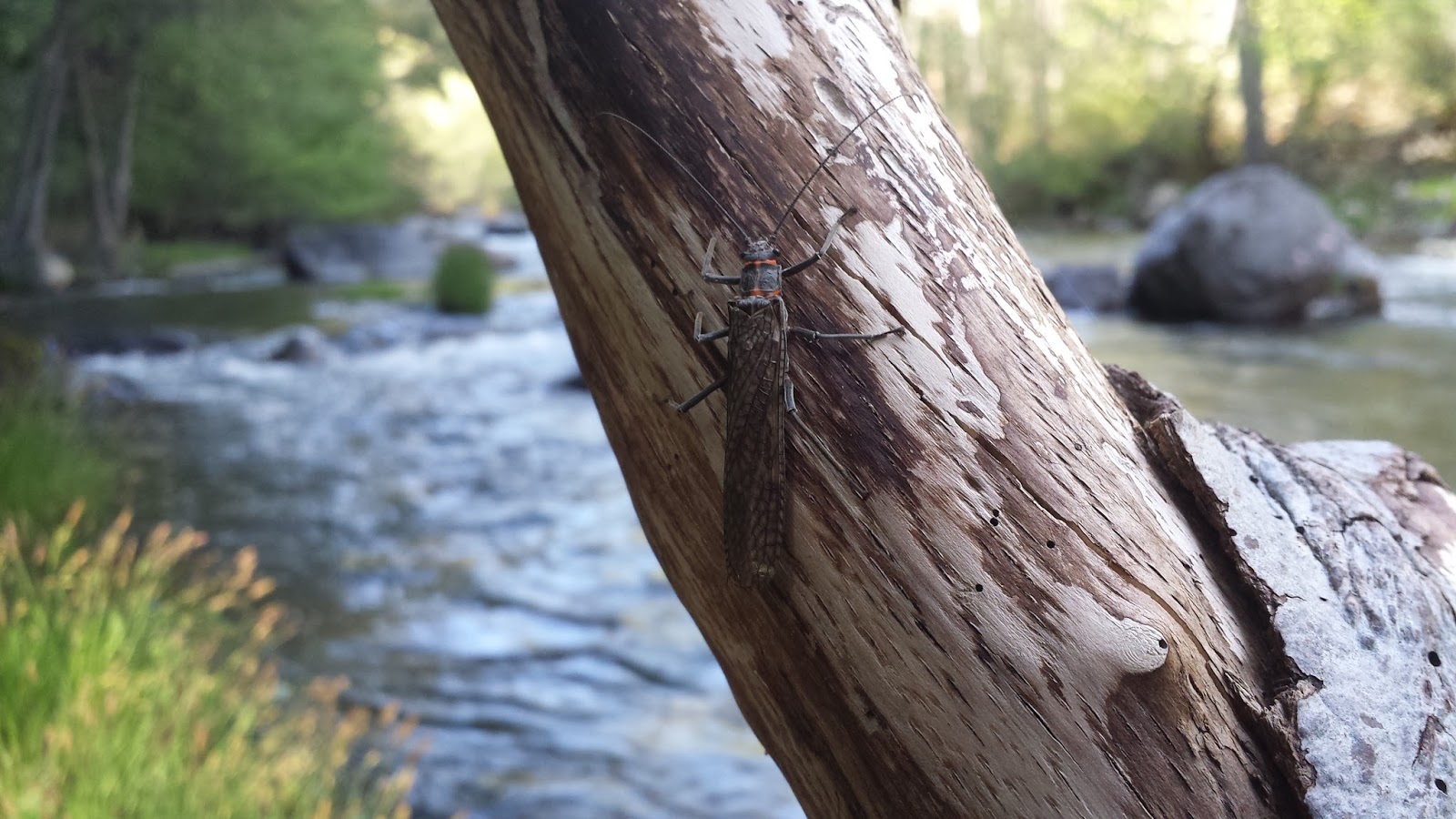 |
| Big Mac Bug |
Tight-line nymphing produced the most fish. The good ole copper john plus pheasant tail dropper did the trick.
Truckee & Little Truckee
I spent some time on the Truckee and Little Truckee this week as well… and got my butt kicked. Skunked like a punk, not even a single bump all day. I saw some very nice browns where I was fishing and although I didn’t catch them, it was cool to see a Truckee River brown in real-life. I’ll get them next time.
 |
| Truckee River Grand Canyon |
Ellis Lake
The spring crappie bite is on at Ellis Lake. Every other cast is producing a nice pan-sized crappie on a strip-strike. After catching a few on the main lake, I fished the northern lake where I ran into a gear angler who told me, “Someone caught a 20” five pound crappie at Ellis Lake the other day.” I call BS on that. When I got home I checked to find that the world record for a black crappie is five pounds. Either Ellis Lake is growing some monster mutant fish or someone is spreading fishing stories. The biggest crappie I’ve hooked there have been the typical mama 14”ers
Fun fact: Bluegills fight harder than crappie.
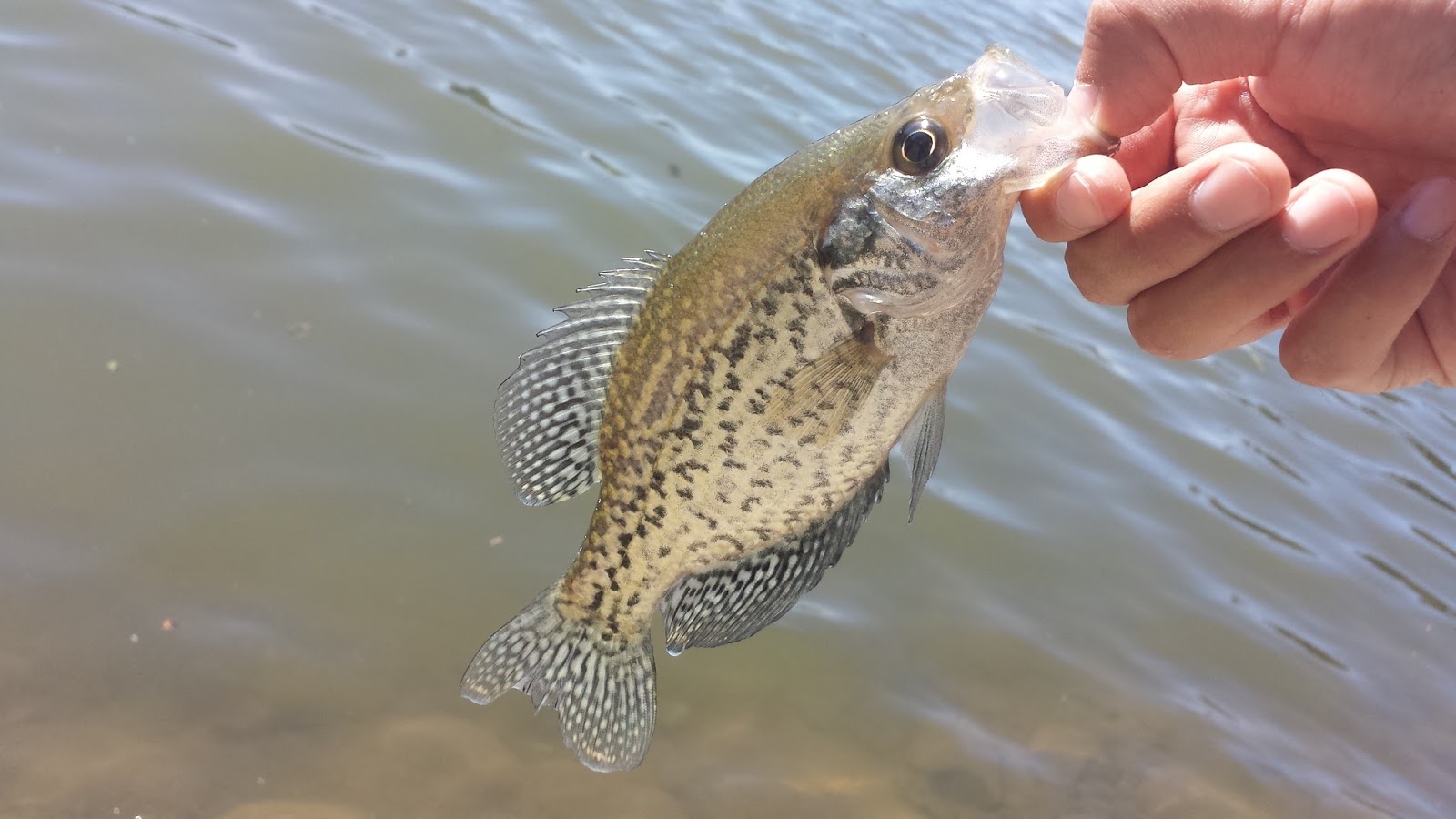 |
| Have a Crappie Day! |
